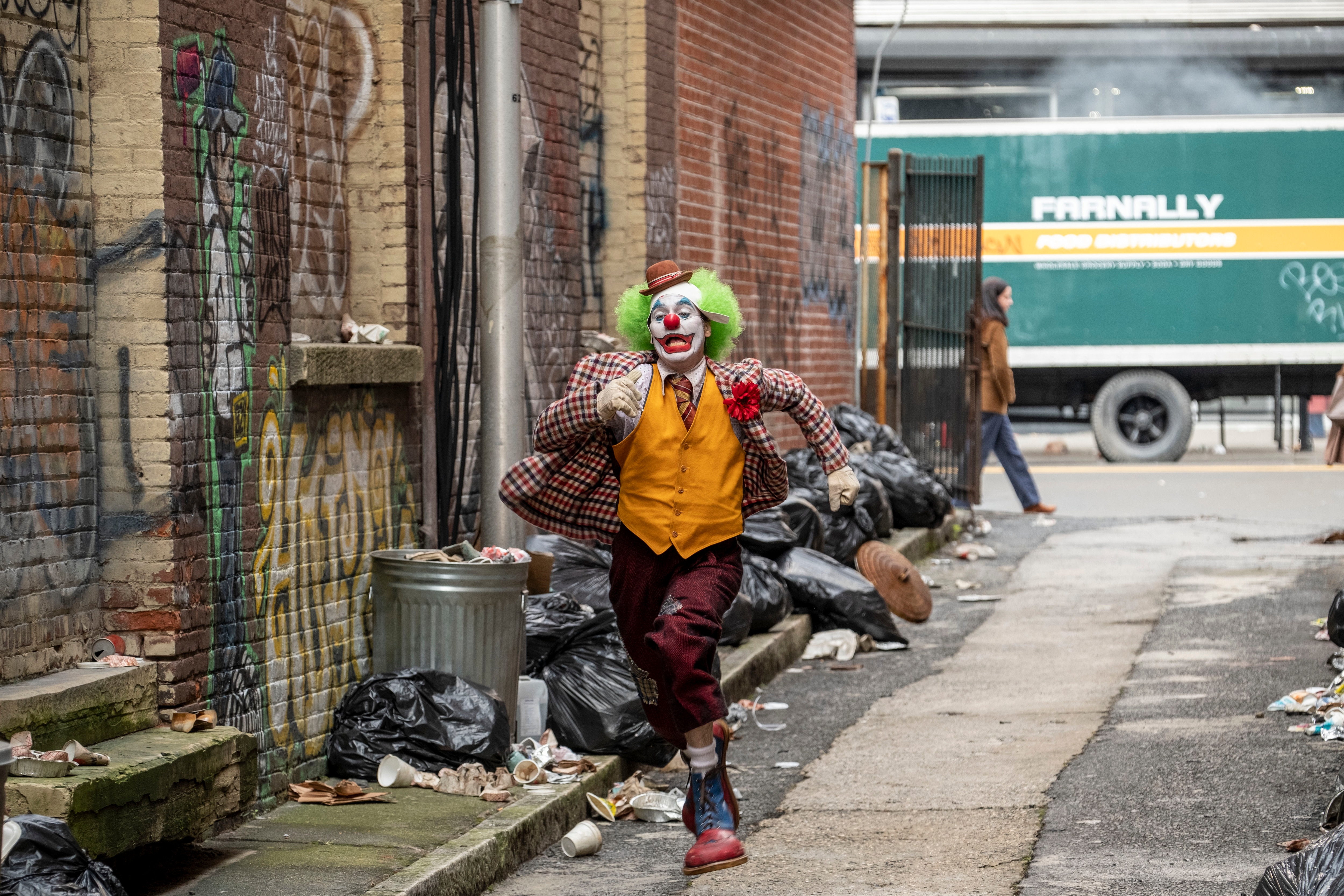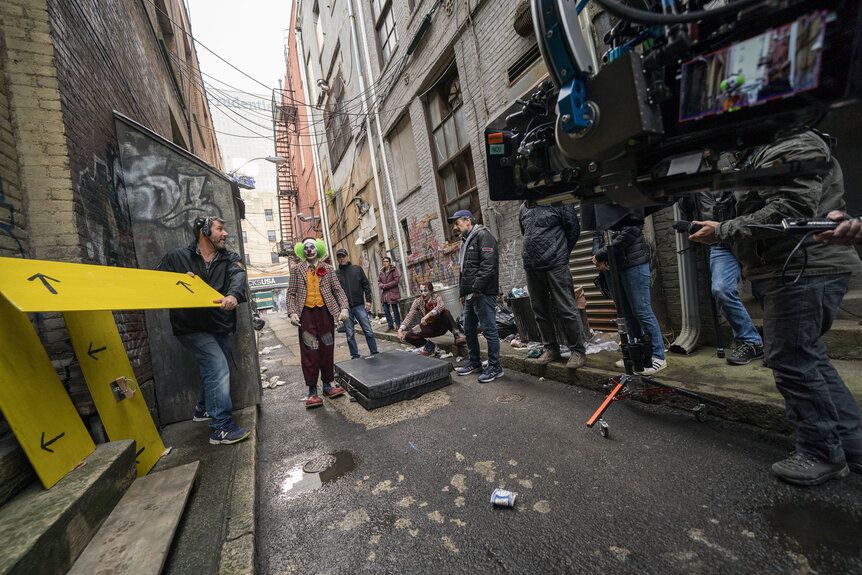Create a free profile to get unlimited access to exclusive videos, sweepstakes, and more!
How Joaquin Phoenix's unpredictable fighting improv made Joker all the more dangerous

Welcome to Awards Contenders. This month, SYFY WIRE is talking to the actors, directors, designers, and craftspeople whose work was featured in the best movies and TV offerings of 2019, and who are now the leading awards nominees. Today, we're speaking with the SAG-nominated stunt coordinator George Aguilar of Joker.
Arthur Fleck was about to kill his former clown colleague Randall. That much was clear. Less obvious was how he'd do it. Stunt coordinator George Aguilar didn't know where actor Joaquin Phoenix — on the way to transitioning Arthur to the murderous Joker — would strike. Would he stab the stunt double in the heart? In the neck? Stunts like these are always meticulously choreographed, but when you're working with an actor like Phoenix, who thrives on doing the unexpected, a certain degree of flexibility is required.
"It's like a dance," Aguilar says. "You have to adjust to what he does. So we told the stunt double, 'This is what we prepared, but you just don't know, and you have to roll with it, basically.'"
Phoenix opted for a quick thrust to the neck, then the eye, and some head bashing for good measure. "It didn't look rehearsed at all," Aguilar says. "It just looks violent and vicious, and that's what we wanted because that's the first time you really see Arthur go crazy on somebody."
Phoenix's tendency to go off-script and come up with new, unexpected action kept Aguilar, the stunt team, and other actors on their toes, especially because the actor often didn't want to rehearse in advance — he'd have them rehearse without him. In prepping the scene where Arthur Fleck kills three guys on the subway, Aguilar sketched out the action with the three actors, and warned them, "Look, this is what we've planned, but it will probably change on the day."
And it did — with Phoenix suddenly kicking back. "These weren't stunt people, these were actors," Aguilar says. "They were just supposed to beat him up, and all of a sudden, he starts defending himself. He tried to kick the guy who punched him about four times." The actors rolled with it, and one of them even improvised a line: "We've got a kicker, huh?" Arthur's unsuccessful resistance changed the dynamic of the scene.
One of the trickiest stunts to orchestrate was the one in which Arthur, fleeing the police, gets hit by a taxi cab. Phoenix did all of the running and almost getting hit, but a stunt double took the harder hit, rolling up the hood to the top of the car, and then tumbling back forward onto the street. From there, Phoenix did a piece where he recovered and continued running.
But to plan for all contingencies, Aguilar told all the drivers to be ready for Phoenix to run past his mark, in any direction — and to be extra careful, because if Phoenix had to avoid a car, he might run in the wrong direction and hit one of the steel beams holding up the subway platform. "That was our main worry," Aguilar says. "A steel beam is not very forgiving."
Although it isn't mentioned in the film, that collision is a key part of Arthur's transition into Joker.
Before going on Live with Murray Franklin, he had planned to kill himself on live television. But as he ran from the police, being hit by a car sent him into shock and gave him a rush of adrenaline. Even though he was injured, he wasn't in pain. He actually felt stronger, at least temporarily. His heart rate increased, he had a surge of energy, and with his mental focus suddenly sharpened, he was able to quickly formulate a new plan.
"It's an added advantage as he goes on the Murray Franklin show," Aguilar says. "As soon as you get in a situation like the one he was in, the adrenaline keeps you up, and your survival instinct kicks in. You might feel invincible. You'd think, 'This doesn't hurt. You can't hurt me.' You wouldn't feel the pain until much later."
With all of the movie's stunts, the goal was to make the pain look as real and immediate as possible. "It's not a superhero movie," Aguilar says. "It needed to feel there was cause and effect to everything. Every punch hurt."



























